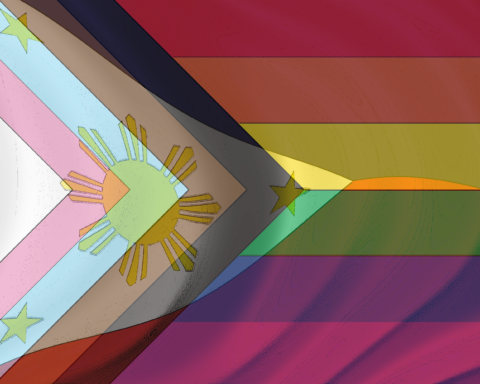John 20: 1-18
“Run, run faster than him,” says the one whom Jesus loved. “I must get there to see if this is true…that the one who loved me is risen from the dead.”
The gospel of John depicts a version of the resurrection that begins with a race. Mary Magdalene approaches the tomb and Jesus’ body is gone. In her shock and sadness, she runs to Simon Peter and the disciple whom Jesus loved. She tells them that the body is gone, and they are off. John tells us that they are running together in an almost sports broadcaster type way and then tells us that the one whom Jesus loved ran in front of Peter…he had to get there first to see. But he could not go in. Peter went inside and saw the clothes folded up and it was then the other disciple could go in and see. He saw and he believed instantly.
Trite as it may be, the relationship between this disciple and Jesus depicted by the gospel of John used to make me so jealous. I used to secretly imagine “the one whom Jesus loved” standing by Jesus’ side, holding hands, smiling at one another. I used to imagine that the one person that John tells us Jesus loved cried so hard as he and Jesus’ mother stood to watch him die. He cried as Jesus told him to take care of Mary, to take her into his household. He and Mary held one another as they watched Jesus’ last breath and stood there as long as they could. I saw them walking hand in hand, grieving this man whom they both adored.
I saw at the resurrection, this disciple run as fast as he could to get to the place where the person he loved so much was laid to rest with the hopes that he had risen. He outruns the others but when he gets there, he cannot go in because of his grief. But when Peter goes in and sees these clothes folded up, this disciple goes in and he believes that his beloved Jesus is alive.
I so wanted that…I wanted that kind of love. And I wanted to see who I was in this resurrection story. And yet, I suppressed my biblically inspired, queer love story whom others would deem heretical. I tucked it in my back pocket secretly lined with rainbow hues and went about my tired existence, continued to be secretly jealous of biblical characters, and ran…ran…ran away from it.
I have been running all of my life. Running from home. Running away from problems. Sprinting to the next exit to get out of situations that were out of the periphery of my controlling nature. Panting and gasping for breath from the mere exhaustion of running 7 days a week, 5 miles a day in order to lose weight … to be thin, to be what I thought men wanted me to be. These mental and physical marathons, toxic masculine 5ks, and internalized homophobic dashes culminated into one long, winding, death dealing run…the one away from myself.
Exhaustion from running away led to absolute numbness which resulted in a breakdown of identity. The running had to stop and I had no choice but to stand still and claim that, yes, in fact, I was queer which was painful, beautiful, life-giving and life-crushing, family-breaking and family-building, and newness-filling and oldness-dissolving. As I developed into my own queerness, this story of the resurrection of Jesus became my resurrection story — my queer resurrection story that I need not be jealous of anymore because we can see ourselves within God and these stories.
As scripture is viewed, we often limit it to print on a page, but in the times of Christ and before, these stories and experiences of the prophets, disciples, and onlookers were often acted out or told to people. They were expressed through a specific person and a specific context. These stories were performed, possibly in different ways with different people acting out the parts. It is storytelling as its best. The text becomes scripts that are brought to life by the human experience. And when we miss this aspect of our Christian tradition, we limit the living Word of God and ultimately create a dead word that will and has killed.
Queerness within its definition is going against the limits, the whiteness, the heteronormativeness, the print on the page that seems permanent, the straight and masculine Christ, the running away. Queerness brings into light the context, the performance, the filters of who we are, the authentic self that God created us to be. In the light of the resurrection, the one whom Jesus loved ran to the empty tomb and ran to the man whom he loved. He ran to the space where life over comes death:
Death that tells us we are limited.
Death that tells us that we have to conform.
Death that tells us that scripture cannot be queer.
Death that tells us to run away.
This queer resurrection creates a glaring light of reds, oranges, yellows, greens, blues, purples, blacks, browns, and pinks that unleashes the urge to run to and not away from. This queer resurrection is a divine extravaganza that provides us with an authentic path where we can dance the dance of liberation, sing the songs of love, sashay down the catwalks of dragged up grace, and embrace God’s beloved creations – us.
So, to the ones whom Jesus loves:
Run to new life,
Run to who you are,
Run to your resurrection,
Run to the ones you love,
For it is there that we find new life.
Christ is risen! Christ is risen indeed! Hallelujah!
Lee Catoe (he/him/his) is the Managing Editor of Unbound and the Associate for Young Adult Social Witness for the Advisory Committee on Social Witness Policy for the Presbyterian Church USA. He is a graduate of Presbyterian College (B.S.) and Vanderbilt Divinity School (MDiv).






Unbound Social